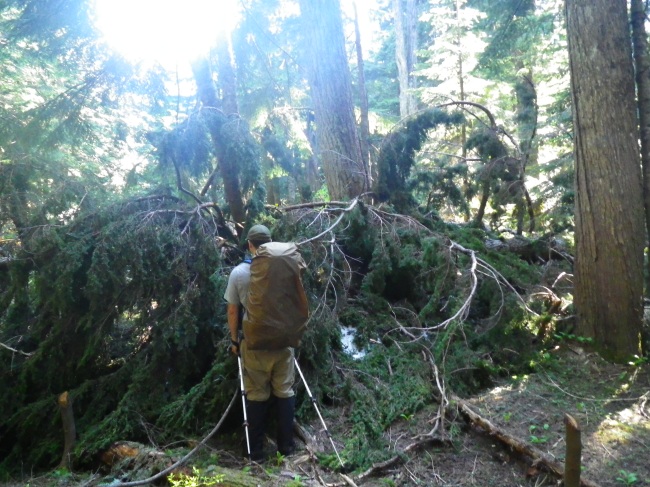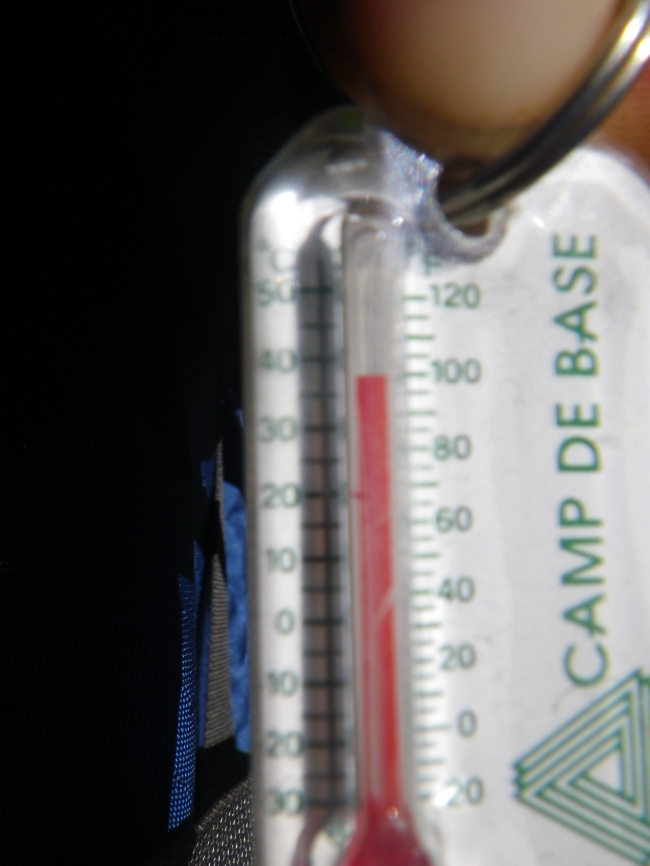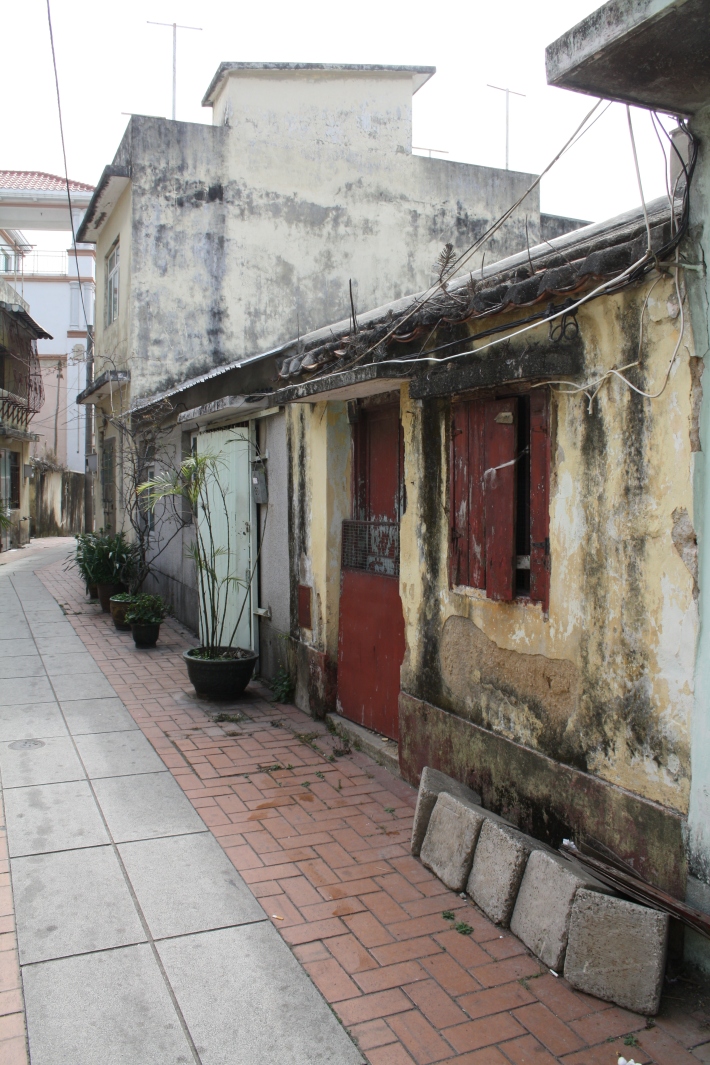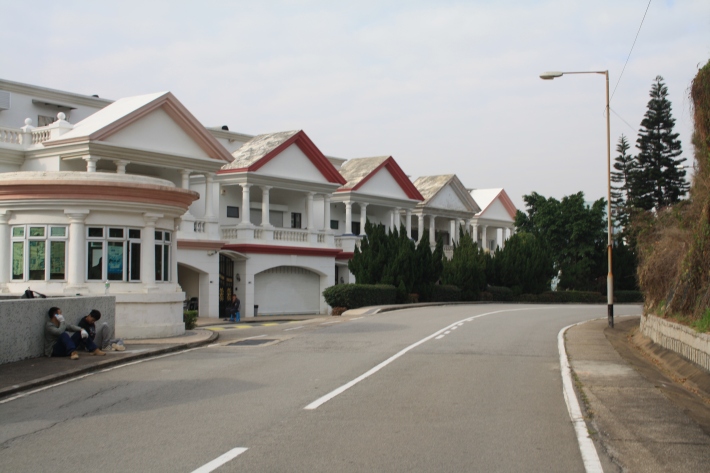
Picking the right backpack/rucksack is arguably one of the most important decisions you will make when buying gear for a trip. Over the past couple of months I was asked to help various people with packs and also just taught a class on how to pack your rucksack just last week. This lead me onto a realization that there are lots of horrible packs out there; horrible, in my personal opinion. I am no expert on packs but over the years I have learned a couple of things.
Above are two packs that I personally own; they are drastically different in a number of ways. Those of you that have been following me from the start will recall that the green one is a part of my day hiking pack, but the blue one is only seen by those who go on multi-day trips with me. The green one (Eberlestock Phantom) was $420CND and the (Tatonka Creek) was part of a Christmas Eve/Boxing Day special and was $99CND down from $200ish. Why would I take the cheaper pack over the expensive one?
The Eberlestock Phantom is a purpose built pack; however, it was designed for military use, in particular, scout sniper teams and urban SWAT precision shooters. It comes with a detachable scabbard for a rifle which I never have attached while on my day hikes, unless I am in grizzly country. It comes with many bells and whistles such as an internal organizer and shelving for calculators, scopes, radios and any other equipment a scout sniper would need or even a hunter; but this is no expedition pack. If you recall my previous post on what I have learned over my summer, you will recall that I found military gear is not always the best gear.
The Tatonka on the other hand, has been my primary pack for the past 10 years. Yes, it has lasted 10 years of neglect and abuse and is still an outstanding pack. Here are a few things I would recommend if hunting for a new pack (keep in mind that this is all my personal opinion):
1) Simplicity- look for a pack that is simple, the less straps, buckles, removable compartments and zippers it has, the lighter it will be. Yes, I may be pinching ounces here, but your pack is part of your base gear, and ounces here and there can add up! This doesn’t mean that you go out there looking for a pack with zero features. Look for one that looks clean and easy to use. If you find yourself digging through pockets, and saying “oh yeah! I can PROBABLY use that pouch for my sunglasses or multitool…” it is likely too complex. Say NO to bungee/shock cords on the external of the pack. Lets face it, bungees make packing easy, It may be tempting to buy a rucksack with bungee zig-zagging along the front of the pack but easy packing comes at a price. They are horrible for keeping things secure! I’ve seen my fair share of tents, air mattresses, sweaters fall out of these bungee fixings. They also have a tendency to get snagged on branches in heavy brush or even break! There are so many packs other there now with shotty bungee cord panels and lots of people fall into the trap of using it for attaching vital gear.
2) Ask yourself: How many days am I likely to go for? Most people will go for 3-5 days. With that, your base gear will take about 30L and then add approximately 10L for every additional day. For an example a three day trip would mean a 50L pack (30L + [2x10L] = 50L; sorry to my American readers, I don’t know the Imperial conversion). My Tatonka is a 50L pack with 10L of expandable space, and I have learned that sometimes smaller is better. With 60L of space you would imagine that I would run out of space really quick and you would be right. This will force you to pack smart! The first time I went up to Garibaldi Lake with this pack, I was able to fit 85lbs worth of gear in there; needless to say, that was an excessive amount of gear and I was able to do the same hike with 45lbs of gear in less than 1/3 of the time. An excessively large pack will also result in a bad packing job, because it is so easy to pack, you will tend to not pack it properly resulting in an unevenly balanced pack that will end up wrecking you halfway up the mountain!
3) Your body size: How large of a pack can you comfortably carry? If you have a 90L pack and are less than 120lbs, chances are the pack is going to hinder your mobility. Are you still growing? If you are still growing you may want to look for a pack that will grow with you! Tatonka has a system that will allow you to adjust the pack from XS-XL (shown below), that is why it has lasted me 10 whole years!
3) Look for Durable Construction – look for a pack that has reinforced seams and tough zippers. There is nothing worse than having a zipper pull break, or a seam explode on you mid trip. Yes, it may be obvious that you want it to last a long time, but more importantly, many people forget that they tend to pack better at home than they do in the field. I find that many times, I end up over packing a certain compartment when I’m packing to come back down the mountain because I am in a rush to meet a certain timing. Another thing people forget about are the shoulder straps. I’ve noticed many new packs smaller than 65L have thin shoulder straps. Call me old fashion, but I like the thick beefy padded straps for when I do carry those heavy loads.
Must Have accessories!
1) Compression sacks: If you find you’re running out of space, these will make you space. Use these with caution though. When you compress them, they tend to make weird shapes and unbalance your pack. They can also contribute to you packing way too much!
2) Rain cover: On my last trip I tossed a rain cover on my pack not because it was raining. I did it to prevent the straps from getting caught on branches! Works like a charm and you have it in case it does rain.
3) Dry bags: If things take a turn for the worst, you’ll still have dry equipment! If you can find a Compression Dry bag that’s even better! Sea to Summit make a great one that come in different sizes. I keep my clothing in one on every trip, so if I fall through the ice on a trip or into water, I still have a full set of dry clothing.
If you need more info on pack sizing and fitting you can find it here: http://www.mec.ca/AST/ContentPrimary/Learn/Packs.jsp
BTW! I am currently collecting donations for Movember!
During November each year, Movember is responsible for the sprouting of moustaches on thousands of men’s faces, in Canada and around the world. With their “Mo’s”, these men raise vital funds and awareness for men’s health, specifically prostate cancer and male mental health initiatives. (Retrieved from http://ca.movember.com/about/, November 04, 2012) Please feel free to donate any amount to the link below! Remember every little bit helps!
https://www.movember.com/ca/donate/payment/member_id/2411642/






































